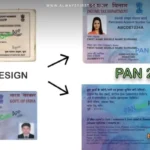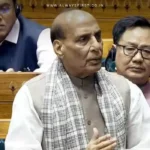Key Takeaways
✔ Daily balance checks now capped at 50 per day – NPCI aims to reduce system overload.
✔ Auto-debit payments shifted to off-peak hours – Only before 10 AM or after 9:30 PM.
✔ Pending transaction checks limited to 3 attempts – With a 90-second gap between each.
New UPI Rules Effective August 1: What’s Changing?
The National Payments Corporation of India (NPCI) has rolled out a fresh set of UPI guidelines starting August 1, 2025, impacting millions of users across platforms like PhonePe, Google Pay, and Paytm. While these updates aim to streamline digital payments and ease backend pressure, they also introduce key restrictions that could alter how you manage daily transactions.
1. Stricter Limits on Balance Checks
Gone are the days of unlimited balance inquiries. Under the new rules, users can now check their bank balance only 50 times per day via UPI apps. This move is designed to reduce excessive API calls that often slow down systems during peak hours.
To compensate, NPCI has introduced an auto-balance display feature—after every transaction, your updated account balance will automatically appear, eliminating the need for manual checks.
2. Auto-Debit Payments Shift to Off-Peak Hours
Recurring payments—be it Netflix subscriptions, electricity bills, or mobile recharges—will now only process during non-peak windows: before 10 AM or after 9:30 PM. This change aims to distribute transaction loads more evenly, preventing system crashes during high-traffic daytime hours.
3. Linked Account Retrievals Capped at 25 Daily Attempts
Whether you’re re-adding a bank account or updating details, NPCI now restricts account retrieval attempts to 25 times per day. This prevents unnecessary backend strain from repeated requests.
4. Tighter Controls on Pending Transaction Checks
If a payment is stuck, users can check its status only three times, with a mandatory 90-second gap between attempts. This reduces redundant server queries that previously contributed to delays.
Why These Changes Matter
NPCI’s updates prioritize system stability and efficiency, especially as UPI handles billions of transactions monthly. While casual users may not notice major disruptions, frequent payers—like small businesses or heavy transactors—should adapt to these limits to avoid hiccups.
Final Thought:
These tweaks reflect India’s push toward a smoother, more resilient digital payments ecosystem. Staying informed ensures you navigate the new rules seamlessly.









































Leave a Reply